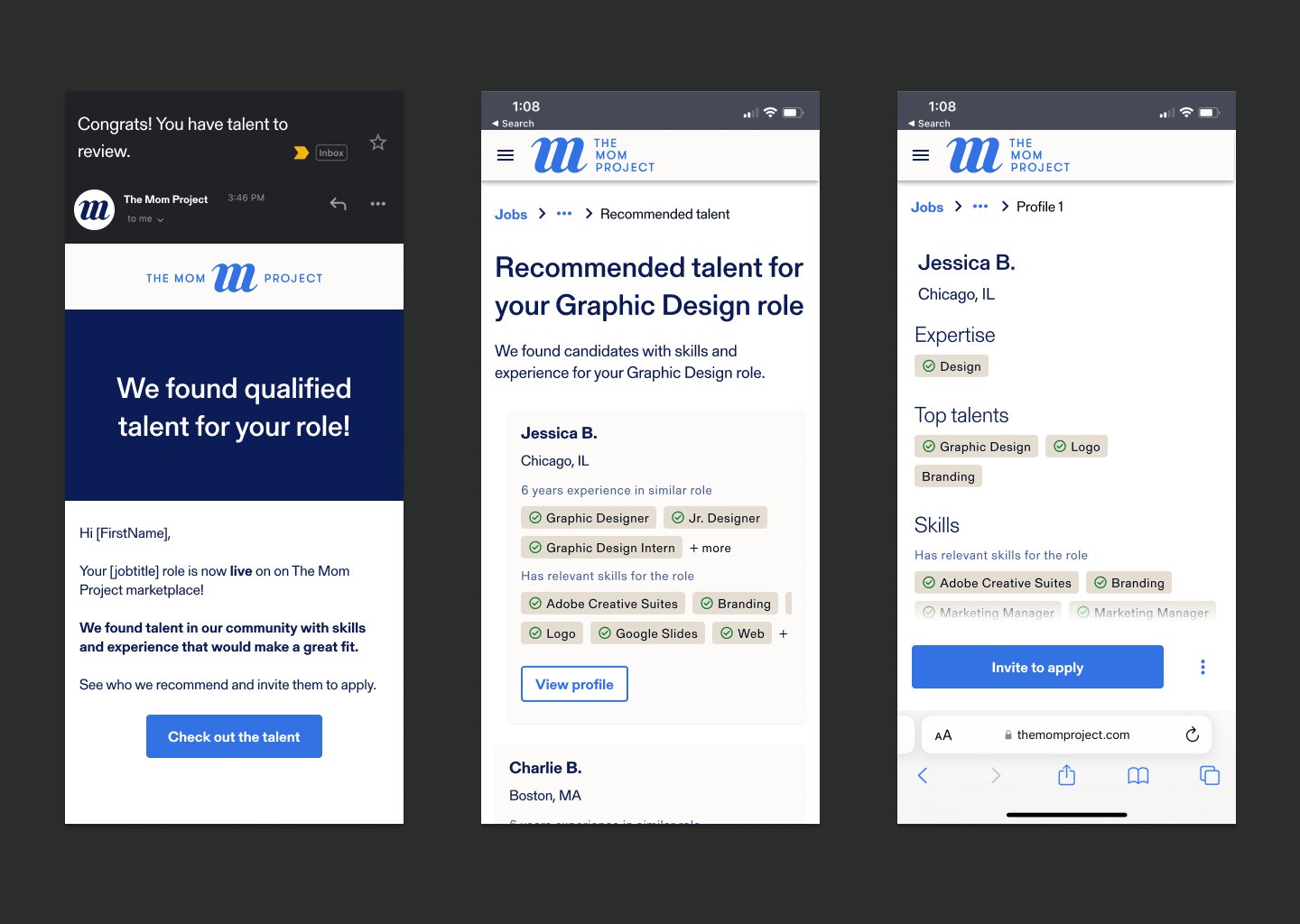Using machine learning to quickly find qualified talent
2023
The Mom Project
Visual Design/UI
User Research
Prototyping
User Experience
Background
The Mom Project is a dual-sided marketplace for moms to find their next role with like-minded companies. Our goal for this feature was to provide employers with viable talent recommendations. Once a job is live, they can invite candidates to apply, which would shorten the time to the first application.
My role
I was the Lead Product Designer on this project.
My responsibilities included:
Collaboration on requirements, user stories, and iterations
Collaboration to develop success metrics
Collaboration with AI Engineering team to map user experience to machine learning
Create conceptual designs, wireframes, high-fidelity designs, and prototypes
Lead user research strategy and executed unmoderated research
Created and established design system components
Design visuals for product marketing
Our problem is employers cannot quickly find prospective candidates in the Mom Project platform because they must wait for applications.
The Design Process
The design process started by creating design concepts to communicate the product story.
I built a sizzle reel alongside a writer and product lead. This enabled us to communicate the vision and proposed feature's value to stakeholders and key partners to get buy-in.
Next, I collaborated with the Product Manager to define the requirements and user stories.
Employer looking to hire
When my job goes live, I want to receive recommendations from TMP to consider inviting them to apply for the role.
When I have recommended talent available, I want to be notified so that I can start reviewing them.
When I see talent that is a good fit, I want to be able to invite them to apply so I can show interest and have them apply.
Eligible talent
When I am a good fit for a job, I want to be recommended so that I am more likely to bid.
When an employer invites me to apply, I want to be notified quickly so that I can take action.
Early design exploration included creating workflows to capture the architecture and user experience.
Creating in-depth workflows early on ensured the recommendation model was aligned with the user experience. This artifact was used as a conversation and alignment piece between product managers and engineers to ensure we knew how and what we
were building.
We put early design iterations in front of customers to validate design direction.
I developed a user research plan for both sides of the marketplace, created preliminary designs and prototypes, executed research, and synthesized it. The research was unmoderated and included questions, rating scales, and prototypes.
Our research goals were to (1) understand our talent’s perspective on the proposed recommended talent feature [specifically the invitation process] and (2) understand our employer's perspective on the proposed recommended talent feature.











